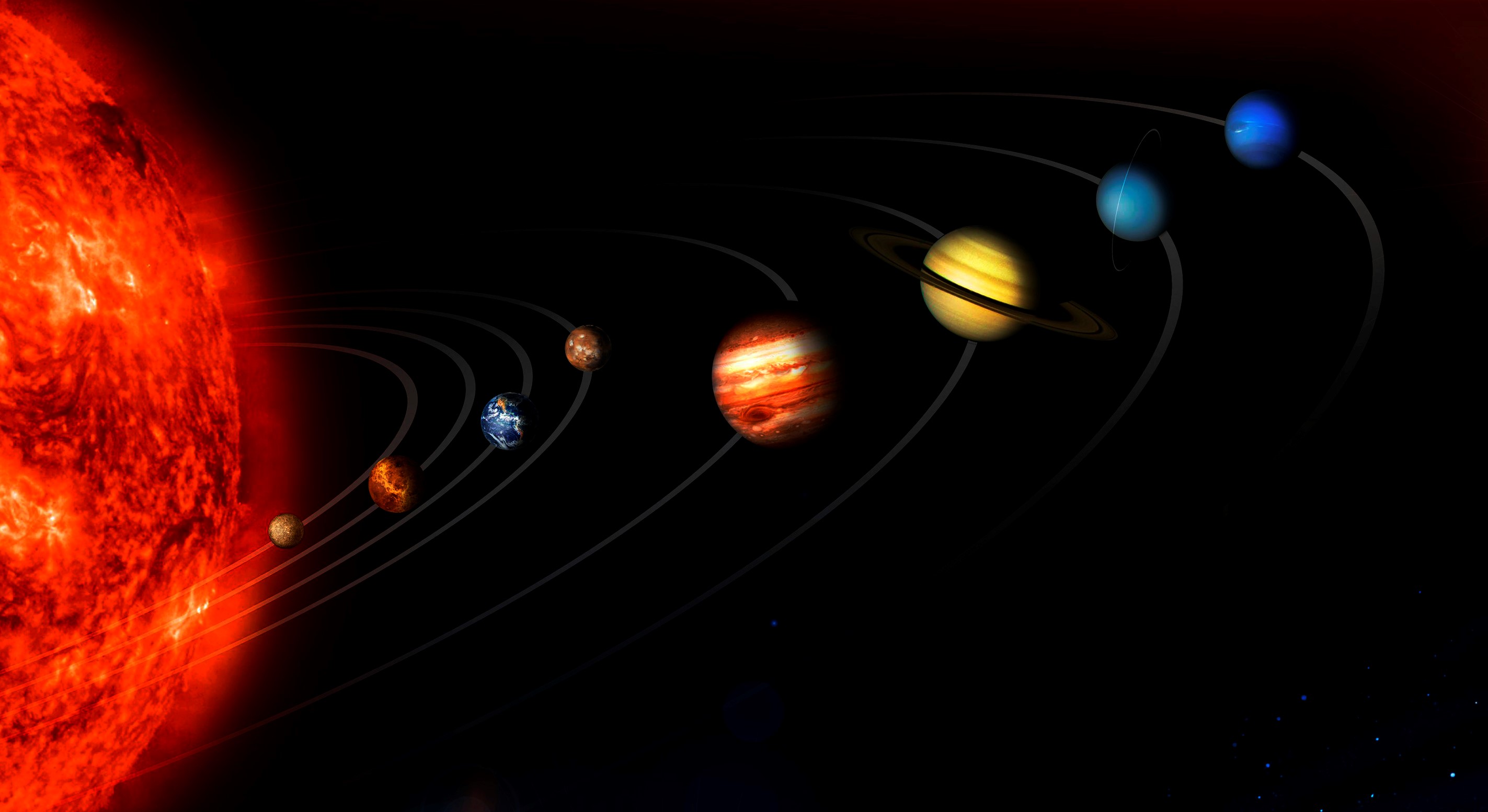What is a solar system?
A solar system is the collection of objects within a star's gravitational field.
Can you think of three different types of objects this might include?
Our solar system
The Sun is the star at the centre of our solar system.
There are eight planets in orbit around the Sun.

rawpixel.com/image/440551/free-photo-image-solar-system-universe-astrology
The planets are named below in the same left-right order shown in the above image.
- Mercury
- Venus
- Earth
- Mars
- Jupiter
- Saturn
- Uranus
- Neptune
Using this information, answer the following questions:
- Which planet is the largest?
- Which planet is the smallest?
- Which two planets have rings?
- Which planet do you think will be the hottest?
- Which planet do you think will be the coldest?
- Why is Pluto no longer considered a planet?
Naming planets
There are a number of different mnemonics (phrases to help remember an order) for planets. Below are a few examples, you don't have to use one of these, but you should find/create one that works for you.
"My Very Evil Mouse Jumps Straight Up Noses"
"My Violent Evil Monster Just Scared Us Nuts"
"My Very Eager Mother Just Served Us Nachos"
"Many Very Educated Men Just Screwed up Nature"
"My Very Easy Method Just Speeds Up Naming"
You may have noticed all the planets (except Earth) are named after Gods from mythology.
Research Exercise: See if you can find out what each of the Gods the planets are named after, were Gods or Goddesses of.
For example; Mercury was the Roman God of shopkeepers, merchants, travellers, transporters, thieves and tricksters.
How do solar systems form?
When a huge star goes supernova (explodes) it creates a giant dust cloud called a nebula. Below is an image of such a 'dust-cloud', this one is called Orion's Nebula.

NASA's Hubble Space Telescope Imagery of Orion's Nebula
A nebula can collapse in on itself as the particles start to form into clumps of higher gravity that pull the rest of the material towards themselves. These clumps are called Bok Globules (named after a Dutch astronomer, Bart Bok).
The material inside these Bok Globules becomes more compressed and the gravitational fields grow, forming protostars (baby stars that are not yet hot enough to be considered stars).
As the pressure continues to grow within a protostar, the temperature increases. Finally, once the core reaches 15 million ℃, a process called nuclear fusion starts. Now it is a star.
The remaining circling dust and material from the nebula, called the accretion disk, continues to spin around the newly formed star. The material crashes and merges together and slowly form planets, moons, asteroids, and planetary rings.
Below is a video showing the formation of a solar system. As you watch it look out for the key points. It starts with a nebula, then a protostar appears, the protostar then becomes a star, the rest of the nebula starts to form planets orbiting the star.
This is how our solar system was created about 4,571,000,000 (4.571 billion) years ago.
Activity: Now try to draw the different stages of a star's formation/birth in a comic strip. Don't forget to label them using the keywords highlighted in the above text.